Hello everyone! As in my previous two posts about Paris, I’ll give you a brief introduction first, (just in case you didn’t see them, if you have just skip the next two paragraphs) 😛
“Paris – the city of love. When I first arrived in Europe, the cities I always wanted to go are London and Paris, but I waited for more than two and a half years. I don’t know why I waited so long but fortunately I went there in May this year, finally. I have to admit, compared to other cities I’ve been to in Europe, Paris is huge. I wouldn’t suggest you explore the whole city by foot. Thanks to Paris public transportation, it is very convenient to go to most of the attractions by metro or bus, and to Versailles, by train.
I spent 5 days in Paris and I believed I made my travel plan pretty intense. However, I would’t say I’ve seen everything I wanted to see. Also, some of the places such as Louvre and Pantheon, I would definitely go and visit again. Well, I guess that’s because Paris is just not the city to be seen enough in one visit. The good thing is I’ve taken a glimpse of many places this time and when I come again I’ll know where to go. If you wanna take a close look at whole Paris, I would say your stay should be at least a week, or, just come back whenever you want to as Paris says, you’re always welcome.”
Some people might start wondering, “Did you just go to the museums in Paris?” Of course, not. If you are not interested in museums (still I strongly recommend Louvre), there are many other attractions to see. In this post I’ll talk about Notre Dame, Panthéon, Pont Alexandre III and Les Invalides. All the entry tickets are again, included in the Paris Museum Pass. If you didn’t read my first post about Paris, “Paris – Louvre!”, please click here to check more info about The Museum Pass and Paris public transportation tickets.
Now let’s move to our first destination,
Notre Dame
The Cathedral
Notre Dame is widely considered to be one of the finest examples of French Gothic architecture, and is among the largest and most well-known church buildings in the world. On 2nd of December 1804, Pope Pius VII officiated the coronation ceremony of Napoleon I and his wife Josephine here in Notre Dame.
Access to the cathedral is open and free of charge every day of the year, during the opening hours.
If you wanna know more about the opening hours (as well as service times) please click here.
One tip, When you see there is basically no line or a small line, grab the chance and visit the inside of the cathedral first. If there’s a long line, walk around the cathedral, visit the cathedral’s treasury, archaeological crypt, or the towers first and then comeback. Anyway, from my experience, the line is not always that long. You definitely should go in but don’t waste time lining up. 🙂
When you come around and get in the church, don’t forget to look at the spire and east side of the cathedral, the organ and of course the north rose window.
The Cathedral Towers
Actually, when I first heard of Notre Dame, it’s because of the novel by Victor Hugo. In 1831, French author Victor Hugo published the novel The Hunchback of Notre-Dame. I remember I watched the movie when I was in primary school and was so interested in and impressed by the monsters (chimera statues) siting on the towers, so this time when I was planing my trip, I decided I have to meet Le Stryge.
I was able to use the Museum Pass to enter the towers. However, if you don’t wanna buy the museum pass, please click here to check real-time opening hours and tickets (prices, reduced tickets, free tickets etc.). I suggest that you should check it before you go as it also announces early or later closing time. The line to enter might be a bit long as I waited for around 30 mins in busy season (but the weather was quite cloudy so the line might be even longer in good weather in busy season).
Access is located outside the cathedral, at the foot of the North Tower.
One thing good about this is that they control the amount of people so it’s not crowded in the towers and you can enjoy the breathtaking views of Paris, plus detailed looks at the roof, the spire, and the cathedral’s largest bell, the Emmanuel Bell (the bell that Quasimodo rings everyday in Hugo’s novel The Hunchback of Notre-Dame).
When you climb the tower to the middle level and go outside, you will see The Stryge holding his chin by his wrists and overlooking the whole paris. Probably it’s because of the weather and the novel, I had a feeling that I couldn’t describe. It feels sad, but at the same time peaceful and relaxing. This feels totally different from the Paris – the capital of France, I imagined. Anyway, I recommend the Cathedral Towers as a must-go attraction.
The Cathedral’s Treasury & Archaeological Crypt
As the line to go to the towers took me quite some time, I didn’t actually go to The Treasury or Archaeological Crypt. However, if you’re interested, please click here to know more about the opening time, tickets and what are there under the title “For Individual Tours”.
Panthéon
Hours: Daily 10am-6pm (last entrance 45 min. before closing)
Cost: 7€ adults, 4.50€ ages 18-25, free for children 17 and under
For me, I wanted to come here to see two things, the Foucault pendulum and the burial place of Voltaire, Rousseau and Victor Hugo. If you can get up to the dome it’s also a wonderful view of Paris city. However, it seems you are only allowed to get up there if you are in tours.
According to Wikipedia, “In 1851, physicist Léon Foucault demonstrated the rotation of the earth by constructing a 67-metre Foucault pendulum beneath the central dome. The original sphere from the pendulum was temporarily displayed at the Panthéon in the 1990s during renovations at the Musée des Arts et Métiers. The original pendulum was later returned to the Musée des Arts et Métiers, and a copy is now displayed at the Panthéon.”
If you wanna know more about what Foucault pendulum is, please click here.
After I arrived here, I realized in the burial place, there are many more great people resting here. The inscription above the entrance says “To great men, the grateful homeland.” As such, interment here is severely restricted and is allowed only by a parliamentary act for “National Heroes”.
The great people rest here include Voltaire, Rousseau, Victor Hugo, Émile Zola, Jean Moulin, Louis Braille, Jean Jaurès and Alexandre Dumas, the author of The Three Musketeers. However, some people’s remains disappeared or was disinterred.
Pont Alexandre III & Les Invalides
If you wanna have a look Napoleon’s tomb, I suggest you go through the bridge Pont Alexandre III, which connects the Champs-Élysées avenue and Les Invalides. It is widely regarded as the most ornate, extravagant bridge in the city.
When you cross the bridge, take some time to appreciate the four bronze statues of Fames and the “Nymphs” in the middle.
On the last two picture you can see the building with a golden dome in front of you. That’s Napoleon’s tomb.
Les Invalides contains museums and monuments, related to French military history. The Musée de l’Armée, the Musée des Plans-Reliefs, and the Musée d’Histoire Contemporaine, as well as the Dôme des Invalides, a large church with the burial site for some of France’s war heroes, most notably Napoleon Bonaparte. Unfortunately, I only went to Dôme des Invalides to have a look at Napoleon’s tomb as I’m not really interested in military stuff……
However, if you are interested, please click here to check the opening hours, tickets and more info about the museums, monument and church. The Museum ticket includes admission to:
- Army Museum’s permanent collections
- Dome Church and tomb of Napoleon I
- Charles de Gaulle Monument
- Museum of Relief Maps
- Museum of the Order of the Liberation
Thank you for reading my post and I hope it helps you to plan your trip in Paris. In next post, I’ll introduce to you one of the world’s most famous palaces – Versailles as well as the Arch de Triumph.
Have a good time in Paris and see you in my next post. 🙂






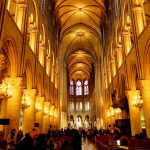









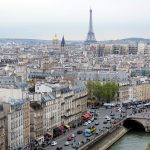





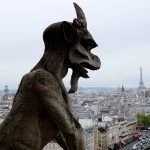

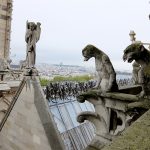



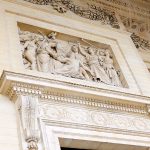

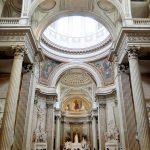
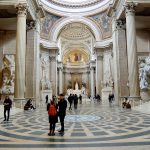



























:))))))))
😛